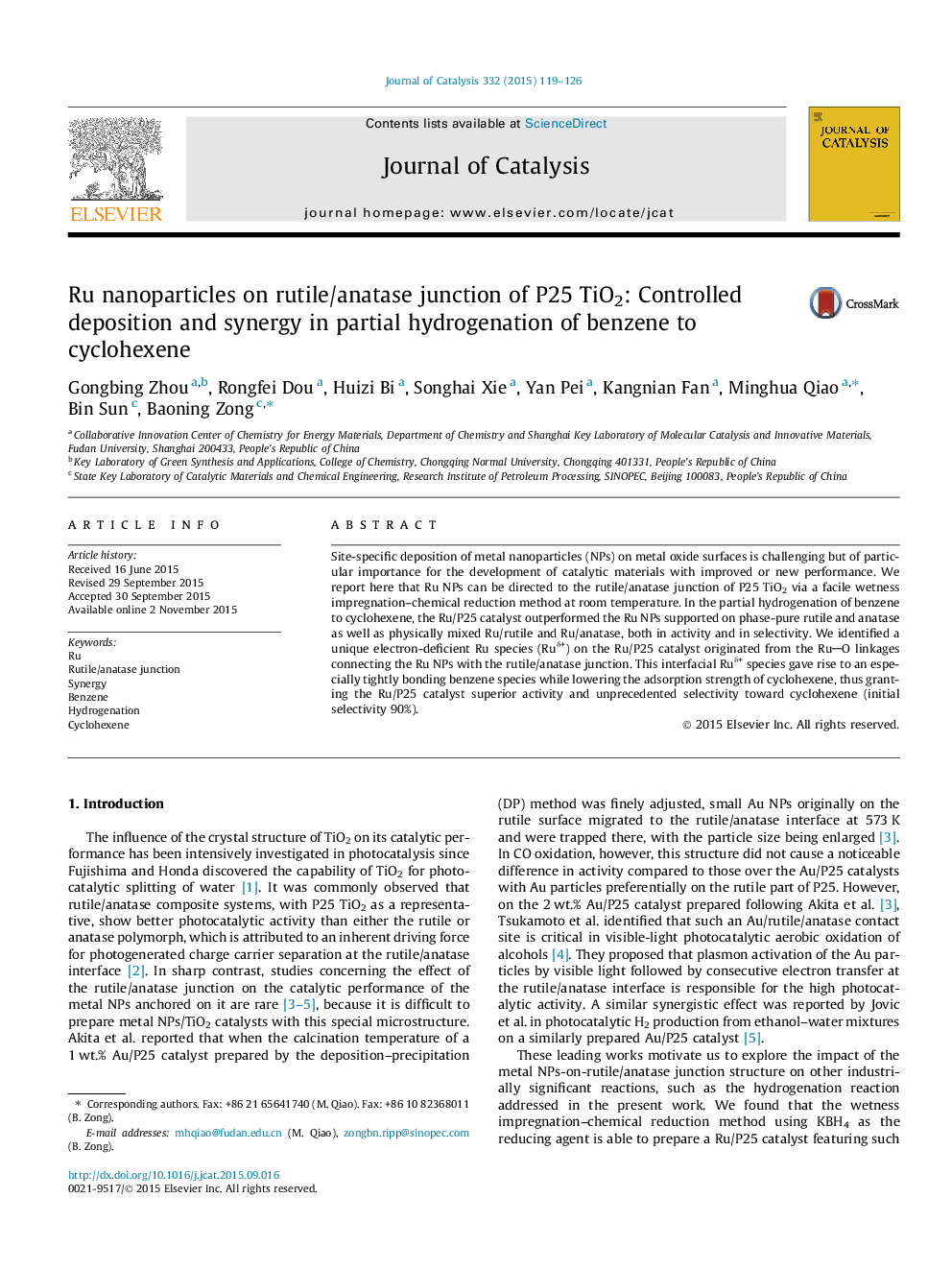| Article ID | Journal | Published Year | Pages | File Type |
|---|---|---|---|---|
| 60730 | Journal of Catalysis | 2015 | 8 Pages |
•Ru nanoparticles (NPs) were directed to the rutile/anatase junction of P25 TiO2.•The Ru/TiO2 catalysts were evaluated in benzene hydrogenation to cyclohexene.•The Ru/P25 catalyst outperformed the Ru/rutile and Ru/anatase catalysts.•A unique electron-deficient Ru species (Ruδ+) was identified on the Ru/P25 catalyst.•The interfacial Ruδ+ species confers superior performance on the Ru/P25 catalyst.
Site-specific deposition of metal nanoparticles (NPs) on metal oxide surfaces is challenging but of particular importance for the development of catalytic materials with improved or new performance. We report here that Ru NPs can be directed to the rutile/anatase junction of P25 TiO2 via a facile wetness impregnation–chemical reduction method at room temperature. In the partial hydrogenation of benzene to cyclohexene, the Ru/P25 catalyst outperformed the Ru NPs supported on phase-pure rutile and anatase as well as physically mixed Ru/rutile and Ru/anatase, both in activity and in selectivity. We identified a unique electron-deficient Ru species (Ruδ+) on the Ru/P25 catalyst originated from the RuO linkages connecting the Ru NPs with the rutile/anatase junction. This interfacial Ruδ+ species gave rise to an especially tightly bonding benzene species while lowering the adsorption strength of cyclohexene, thus granting the Ru/P25 catalyst superior activity and unprecedented selectivity toward cyclohexene (initial selectivity 90%).
Graphical abstractFigure optionsDownload full-size imageDownload high-quality image (183 K)Download as PowerPoint slide
